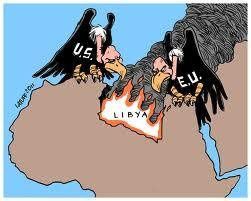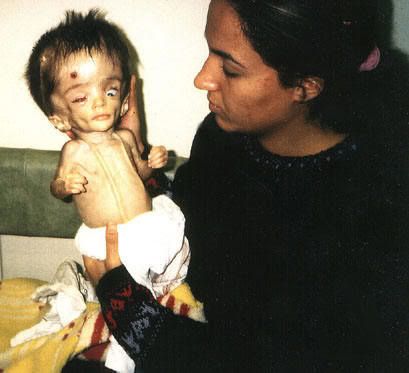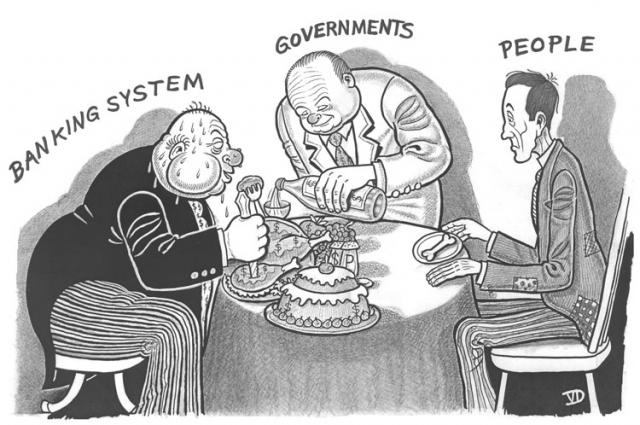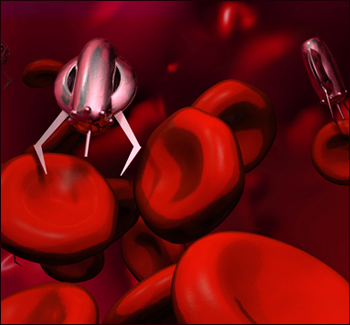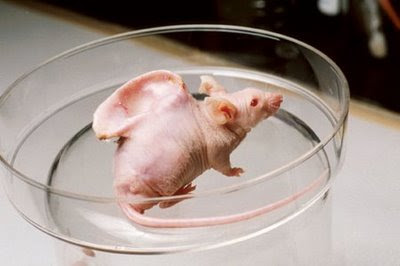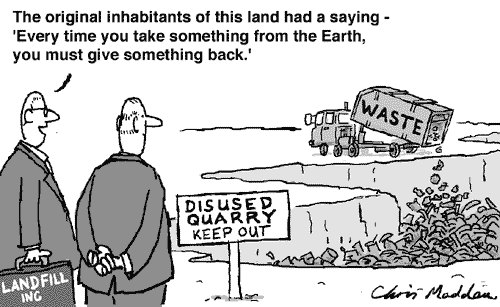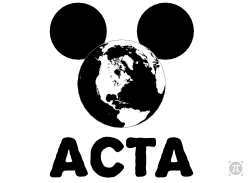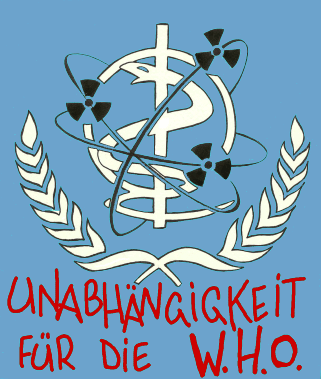The WHO gets more money from private pharma and related industry sources than from governments.
The UK Pharma Giant GlaxoSmithKline is at the heart of the WHO scandals of influence peddling.

WHO's 'Mr Flu' Holland's Albert Osterhaus
has deep ties to pharma industry- Photo: Rense
|
The man with the nickname "Dr Flu", Professor Albert Osterhaus, of the Erasmus University in Rotterdam Holland has been named by Dutch media researchers as the person at the center of the worldwide Swine Flu H1N1 Influenza A 2009 pandemic hysteria. Not only is Osterhaus the connecting person in an international network that has been described as the Pharma Mafia, he is THE key advisor to WHO on influenza and is intimately positioned to personally profit from the billions of euros in vaccines allegedly aimed at H1N1.
Earlier this year the Second Chamber of the Netherlands Parliament undertook an investigation into alleged conflicts of interest and financial improprieties of the well-known Dr. Osterhaus. Outside of Holland and the Dutch media, the only note of the sensational investigation into Osterhaus' business affairs came in a tiny note in the respected British magazine, Science.
Osterhaus's credentials and expertise in his field were not in question. What is in question, according to a short report published by the journal Science, are his links to corporate interests that stand to potentially profit from the swine flu pandemic. Science carried the following brief note in its October 16 2009 issue about Osterhaus:
" For the past 6 months, one could barely switch on the television in the Netherlands without seeing the face of famed virus hunter Albert Osterhaus talking about the swine flu pandemic. Or so it has seemed. Osterhaus, who runs an internationally renowned virus lab at Erasmus Medical Center, has been Mr. Flu. But last week, his reputation took a nosedive after it was alleged that he has been stoking pandemic fears to promote his own business interests in vaccine development.Last week, his reputation took a nosedive after it was alleged that he has been stoking pandemic fears to promote his own business interests in vaccine development. As Science went to press, the Dutch House of Representatives had even slated an emergency debate about the matter."
On November 3, 2009 it appeared that Osterhaus emerged with at least the damage somewhat under control. An updated Science blog noted, "The House of Representatives of the Netherlands today rejected a motion asking the government to sever all ties with virologist Albert Osterhaus of Erasmus Medical Center in Rotterdam, who had been accused of conflicts of interest in his role as a government adviser. But Dutch health minister Ab Klink, meanwhile, announced a "Sunshine Act" compelling scientists to disclose their financial ties to companies."
The Minister, Ab Klink, reportedly a personal friend of Osterhaus, subsequently issued a statement on the ministry's website, claiming that Osterhaus was but one of many scientific advisers to the ministry on vaccines for H1N1, and that the Ministry "knew" about the financial interests of Osterhaus. Nothing out of the ordinary, merely pursuit of science and public health, so it seemed.
More careful investigation into the Osterhaus Affair suggests that the world-renowned Dutch Virologist may be at the very center of a multi-billion Euro pandemic fraud which has used human beings in effect as human guinea pigs with untested vaccines and in cases now emerging, resulting in deaths or severe bodily paralysis or injury.
The 'Bird Shit Hoax'
Albert Osterhaus is no small fish. He stands at the global nexus of every major virus panic of the past decade from the mysterious SARS deaths in HongKong, where current WHO Director Margaret Chan got her start in her career as a local health official. According to his official bio at the European Commission, Osterhaus was engaged in April 2003, at the height of the panic over SARS (Severe Acquired Respiratory Syndrome) in investigation of the Hong Kong outbreak of respiratory illnesses. The EU report states, "he again showed his skill at moving fast to tackle a serious problem. Within three weeks he had proved that the disease was caused by a newly discovered coronavirus that resides in civet cats, other carnivorous animals or bats."
Then Osterhaus moved on as SARS cases vanished from view, this time publicizing dangers of what he claimed was H5N1 Avian Flu. In 1997 he had already began sounding the alarm following the death in Hong Kong of a three-year-old who Osterhaus learned had had direct contact with birds. Osterhaus went into high gear lobbying across Holland and Europe claiming that a deadly new mutation of avian flu had jumped to humans and that drastic measures were required. He claimed to be the first scientist in the world to show that H5N1 could be transferred into humans.
In a BBC interview in October 2005 on the danger of Avian Flu, Osterhaus declared, "if the virus manages indeed to, to mutate itself in such a way that it can transmit from human to human, then we have a completely different situation, we might be at the start of the pandemic." He added, "there is a real chance that this virus could be trafficked by the birds all the way to Europe. There is a real risk, but nobody can estimate the risk at this moment, because we haven't done the experiments." It never did manage to mutate, but he was ready to "do the experiments," presumably for a hefty fee.
To bolster his frightening pandemic scenario, Osterhaus and his lab assistants in Rotterdam began assiduously assembling and freezing samples of, well, bird shit, in an attempt to build a more scientific argument. He claimed that at certain times of the year up to 30% of all European birds acted as carriers of the deadly avian virus, H5N1. He also claimed that farmers working with hens and chickens were then exposed. Osterhaus briefed journalists who dutifully noted his alarm. Politicians were alerted. He wrote papers proposing that the far away deaths in Asia from what he termed H5N1 were coming to Europe, presumably on the wongs or in the innards of deadly sick infected birds. He claimed that migratory birds were carrying the deadly new disease as far west as Rügen and Ukraine. He conveniently ignored the fact that birds do not migrate east to west but rather north to south.
Osterhaus' Avian Flu alarm campaign really took off in 2003 when a Dutch veterinary doctor became ill and died. Osterhaus claimed the death was from H5N1. He convinced the Dutch government to order slaughter of millions of chickens. Yet no other infected persons died from the alleged H5N1. Osterhaus claimed that that was simply proof of the effectiveness of the preemptive slaughter campaign.
Osterhaus claimed that bird feces were the source, via air bombardment or droppings, onto populations and birds below. That was the vehicle for the spread of the deadly new Asian strain of H5N1 he insisted.
There was only one problem with the now voluminous frozen samples of diverse bird excrement he and his associated had collected and frozen at his institute. There was not one single confirmed example of H5N1 virus found in any of his samples. At a May 2006 Congress of the World Organization for Animal Health (OIE), Osterhaus and his Erasmus colleagues were forced to admit that in testing 100,000 samples of their assiduously saved bird feces, they had discovered not one single case of H5N1 virus.
At a WHO conference in Verona in 2008 titled "Avian influenza at the Human-Animal Interface," in a presentation to scientific colleagues undoubtedly less impressed by appeals to pandemic emotion than the non-scientific public, Osterhaus admitted that "A proper risk assessment of H5N1 as the cause of a new pandemic cannot be made with the currently available information." By then, however, his sights were already firmly on other possible pandemic triggers to focus his vaccination activities.
Swine Flu and WHO corruption
 The UK Pharma Giant GlaxoSmithKline is at the heart
The UK Pharma Giant GlaxoSmithKline is at the heart
of the WHO scandals of influence peddling
When no mass wave of human deaths from Avian Flu materialized and after Roche, maker of Tamiflu and GlaxoSmithKline had banked billions of dollars in profits from worldwide government stockpiling of their dangerous and reportedly ineffective antiviral drugs, Tamiflu by Roche, and Relenza by GlaxoSmithKline, Osterhaus and other WHO advisers turned to other greener pastures.
By April 2009 their search seemed rewarded as La Gloria, a small Mexican village in Veracruz, reported a case of a small child ill with what had been diagnosed as "Swine Flu" or H1N1. With indecent haste the propaganda apparatus of the World Health Organization in Geneva went into gear with statements from the director-general Dr Margaret Chan, about a possible danger of a global pandemic.
Chan made such irresponsible statements as declaring "a public health emergency of international concern." The further cases of outbreak at La Gloria Mexico were reported on one medical website as, "a 'strange' outbreak of acute respiratory infection, which led to bronchial pneumonia in some pediatric cases. According to a local resident, symptoms included fever, severe cough, and large amounts of phlegm."
Notably those were symptoms which would make sense in terms of the proximity of one of the world's largest pig industrial feeding concentrations at La Gloria owned by Smithfield Farms of the USA. Residents had picketed the Smithfield Farms site in Mexico for months complaining of severe respiratory problems from the fecal waste lagoons. That possible cause of the diseases in La Gloria apparently did not interest Osterhaus and his colleagues advising the WHO. The long-awaited "pandemic" that Osterhaus had predicted ever since his involvement with SARS in the Guandgong Province of China in 2003, was now finally at hand.
On June 11, 2009 Margaret Chan of WHO made the declaration of a Phase 6 "Pandemic Emergency" regarding the spread of H1N1 Influenza. Curiously in announcing it, she noted, "On present evidence, the overwhelming majority of patients experience mild symptoms and make a rapid and full recovery, often in the absence of any form of medical treatment." She then added, "Worldwide, the number of deaths is smallwe do not expect to see a sudden and dramatic jump in the number of severe or fatal infections."
It later was learned that Chan acted, following heated debates inside WHO, on the advice of the scientific advisory group of WHO, or SAGE, the Strategic Advisory Group of Experts. One of the members of SAGE at the time and today was Dr. Albert "Mr Flu" Osterhaus.
Not only was Osterhaus in a key position to advocate the panic-inducing WHO "Pandemic emergency" declaration. He was also chairman of the leading private European Scientific Working group on Influenza (ESWI), which describes itself as a "multidisciplinary group of key opinion leaders in influenza [that] aims to combat the impact of epidemic and pandemic influenza." Osterhaus' ESWI is the vital link as they themselves describe it, "between the World Health Organization (WHO) in Geneva, the Robert Koch Institute in Berlin and the University of Connecticut, USA."
What is more significant about the ESWI is that its work is entirely financed by the same pharma mafia companies that make billions on the pandemic emergency as governments around the world are compelled to buy and stockpile vaccines on declaration of a WHO Pandemic. The funders of ESWI include H1N1 vaccine maker Novartis, Tamiflu distributor, Hofmann-La Roche, Baxter Vaccines, MedImmune, GlaxoSmithKline, Sanofi Pasteur and others.
Not to lose the point, the world-leading virologist, official adviser on H1N1 to the governments of the UK and Holland, Dr Albert Osterhaus, head of the Department of Virology at the Erasmus Medical College of Rotterdam, also sat on the WHO's elite SAGE and served as chairman at the same time of the pharma industry-sponsored ESWI, which in turn urged dramatic steps to vaccinate the world against the grave danger of a new Pandemic they insisted could rival the feared 1918 Spanish Flu pandemic.
The Wall Street bank, JP Morgan, estimated that in large part as a result of the WHO pandemic decision, the giant pharma firms that also finance Osterhaus' ESWI work, stand to reap some ¤7.5 to ¤10 billion in profits.
A fellow member of WHO's SAGE is Dr Frederick Hayden, of Britain's Wellcome Trust and reportedly a close friend of Osterhaus. Hayden also receives money for "advisory" services from Roche and GlaxoSmithKline among other pharma giants involved in producing products related to the H1N1 panic.
Chairman of WHO's SAGE is another British scientist, Prof. David Salisbury of the UK Department of Health. He also heads the WHO H1N1 Advisory Group. Salisbury is a robust defender of the pharma industry. He has been accused by UK health citizen health group One Click of covering up the proven links between vaccines and an explosive rise in infant autism as well as links between the vaccine Gardasil and palsy and even death.
Then on September 28, 2009 the same Salisbury stated, "There is a very clear view in the scientific community that there is no risk from the inclusion of Thiomersal." The vaccine being used for H1N1 in Britain is primarily produced by GlaxoSmithKlilne. It contains the mercury preservative Thiomersol. Because of growing evidence that Thiomersol in vaccines might be related to autism in children in the United States, in 1999 the American Academy of Pediatrics and the US Public Health Service called for it to be removed from vaccines.
Yet another SAGE member at WHO with intimate financial ties to the vaccine makers that benefit from SAGE's recommendations to WHO is Dr. Arnold Monto, a paid consultant to vaccine maker MedImmune, Glaxo and ViroPharma.
Even more, the meetings of the "independent" scientists of SAGE are attended by "observers" who include, yes, the very vaccine producers GlaxoSmithKline, Novartis, Baxter and company. One might ask if the SAGE are supposed to be the world's leading experts on flu and vaccines, why they would ask the vaccine makers to sit in.
In the past decade the WHO, in order to boost funds at its disposal entered into what it calls "public private partnerships." Instead of receiving its funds solely from member United Nations governments as its original purpose had been, WHO today receives almost double its normal UN budget in the form of grants and financial support from private industry. The industry? The very drug and vaccine makers who benefit from decisions like the June 2009 H1N1 Pandemic emergency declaration. As the main financiers of the WHO bureaucracy, naturally the Pharma Mafia and their friends receive what has been called "open door red carpet treatment" in Geneva.
In an interview with Der Spiegel magazine in Germany, epidemiologist Dr. Tom Jefferson of the Cochrane Collaboration, an organization of independent scientists evaluating all flu related studies, noted the implications of the privatization of WHO and the commercialization of health:
"one of the extraordinary features of this influenza -- and the whole influenza saga -- is that there are some people who make predictions year after year, and they get worse and worse. None of them so far have come about, and these people are still there making these predictions. For example, what happened with the bird flu, which was supposed to kill us all? Nothing. But that doesn't stop these people from always making their predictions. Sometimes you get the feeling that there is a whole industry almost waiting for a pandemic to occur.
SPIEGEL: Who do you mean? The World Health Organization (WHO)?
Jefferson: The WHO and public health officials, virologists and the pharmaceutical companies. They've built this machine around the impending pandemic. And there's a lot of money involved, and influence, and careers, and entire institutions! And all it took was one of these influenza viruses to mutate to start the machine grinding
http://theflucase.com/index.php?option=com_content&view=article&id=2215%3Amega-corruption-scandal-at-the-who-by-william-f-engdhal&catid=1%3Alatest-news&Itemid=64&lang=en
http://www.internationalnews.fr/article-mega-corruption-scandal-at-the-who-by-william-f-engdhal-41242963.html









![Géopolitique : Union transatlantique, la grande menace, par Alain De Benoist [tribune libre] Géopolitique : Union transatlantique, la grande menace, par Alain De Benoist [tribune libre]](http://www.breizh-info.com/wp-content/uploads/2014/06/tafta.jpg)





